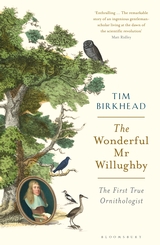The First Ornithologist

At a time when science is viewed with skepticism, if not hostility in certain high places, it is worth looking back to an era when all of humankind was plug ignorant. It wasn’t so very long ago.
In the mid-seventeenth century, Aristotle still reigned as the most reliable font of worldly wisdom, as he had for the previous millennium. He believed, among many erroneous things, that certain animals could spontaneously be born from dirt, and that the explanation for the different looking birds that frequented Greece in summer versus winter was that they were really the same species that had simply morphed into a whole new look for the high season.
Galen, the renowned second century Greek physician, prescribed an avian cure for colic pains: crested lark (plucked and roasted, of course).
Into this world of darkness and folk hokum, in 1635, was born Francis Willughby. The scion of English landed gentry, he would devote his short life to being a citizen scientist, a foot soldier in the war against ignorance. Rather than accept established explanations for natural phenomena, Willughby asked questions, made careful observations, and dissected countless dead creatures to see what made them tick.
In "The Wonderful Mr. Willughby: The First True Ornithologist," Tim Birkhead presents a religiously researched account not only of his subject, but also of his fellow travellers at the dawn of modern scientific inquiry. The author, himself an ornithologist and a university professor, draws on previously unpublished family materials as well as his mastery of the history of scientific progress. His subject’s letters on his fieldwork to the newly founded Royal Society of London for Improving Natural Knowledge, of which he was an original member, are also a valuable resource.
In fact, it was Willughby’s proud descendants who inspired the author to examine the peripatetic career of their ancestor, who, they argued, deserved more credit for his contributions to the understanding of nature.
Among the reasons for Willughby’s relatively low historical profile are that he died young, at age 36, the disappearance of his field notes on birds, and the fact that his masterpiece, “The Ornithology of Francis Willughby,” was published posthumously by his friend and collaborator, John Ray, who as the author of the book based on both men’s research, inevitably received more of the credit.
While this biography is mostly about the pursuit of birds, to identify and classify them, it has a minor focus on fishes and insects, topics of two other encyclopedias that Willughby’s research contributed to. Indeed, he and his pal John Ray were polymaths in the truest sense of the word: they were interested in learning about everything—and back then there was so very much to learn. For example, they wanted to know what the deal was with “ye Sap” emanating from “ye barke” in ye birch trees. So they made careful observations and largely figured it out.
This book also is part travelogue, as the merry researchers gambol about England and Europe chasing down and describing new species, shooting birds and cutting them up, or simply buying dead specimens in the ubiquitous “bird markets” on the continent. They spent three months in Venice alone. In the Netherlands, Ray wanders off the avian path to describe fellow human beings, specifically indigenous females: “The common sort of women (not to say all) seem more fond of and delighted with lascivious and obscene talk than either the English or the French.”
It is surprising to learn how indiscriminately fond of consuming birds Europeans were—and, more surprisingly, still are in some locales today: among other feathered fare, they ate seagull chicks, bitterns, and songbirds galore.
A cautionary note is in order here. The author’s prose can wax academic and he bandies about terms like hemipenes and cloaca without explanation, as if he is lecturing to an advanced university class. The reader may read more about the internal organs of birds—the testes of a green woodpecker, for example—than he or she cares to.
That said, this biography makes an important contribution to a fuller understanding of Mr. Willughby’s pioneering career. As Birkhead notes, together with John Ray, he “transformed the study of zoology in general, and birds in particular. Theirs was the first true classification; they set a new standard in observation and description, and their encyclopedia formed the foundation on which all subsequent ornithology was built.”
Perhaps as important, this book reaffirms in a very dramatic and specific way the vital role of science in the advancement of human understanding and welfare. There is still much yet to learn, of course, but humankind knows so much more today than when an esteemed doctor might advise: “Eat two crested larks and call on me in the morning.”